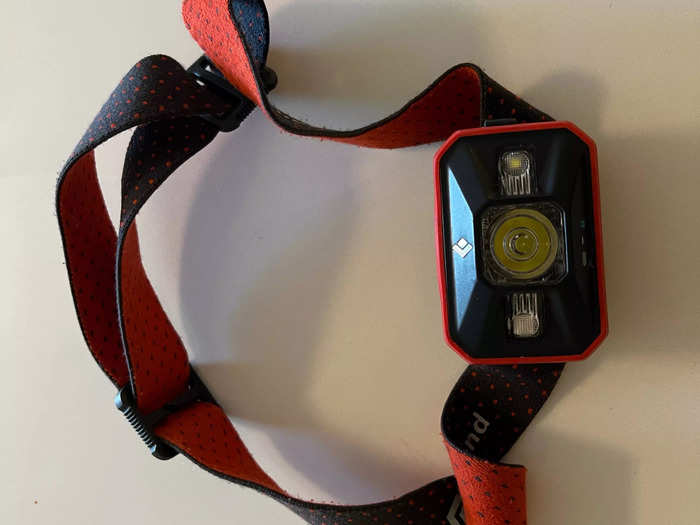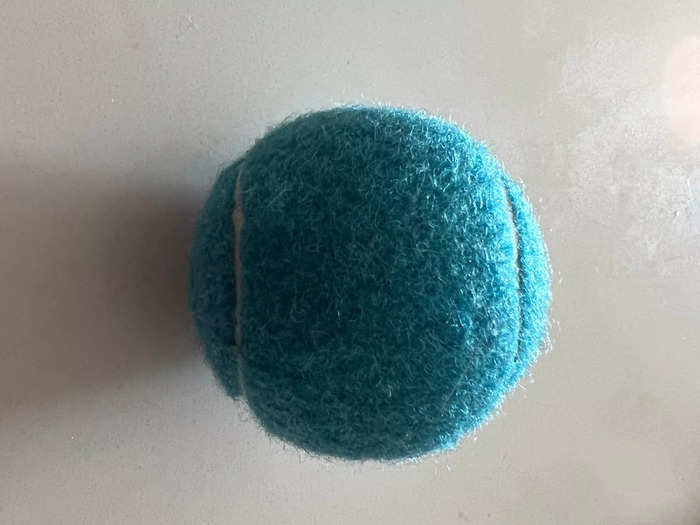I've been skiing for 20 years. Here are 9 items I always pack when I go on ski trips.

- I'm an avid skier who has spent enough time on the slopes to know what's essential.
- Besides gloves, goggles, and typical clothing, there are some items I think everyone should pack.
I've been an avid skier for two decades, and have spent enough time on the slopes to know what's essential.

Besides gloves, goggles, and the typical clothing, there are some items I always pack for my ski trips that I think everyone should, whether you have just a day pass or are going for several days or longer. Keeping my bag stocked with these items helps me stay warm, safe, and lets me fully enjoy my time skiing.
These hand warmers keep my fingers from going numb, which I think is the worst feeling in the world while skiing.

I think that having cold hands when skiing is the worst, and it can happen to anyone. It makes it harder to grip poles, and overall just distracts from a day of fun on the slopes.
No matter when I'm skiing, I always carry a pouch of these hand warmers with me. Each one lasts for up to 10 hours, which I've found is a great value for the price and will keep me covered for a long day on the slopes. They also make foot warmers if your feet often get cold — I often use both. Each one costs just $1.75 so that's $3 for warm hands no matter what for the whole day, which is a no brainer for me.
I don't normally use lip balm, but when I'm skiing, for me it's a must-have item.

The combination of cold, wind, altitude, and sun exposure makes chapped lips almost impossible to avoid, at least in my experience. Every time I've gone skiing without lip balm, I've ended up with cracked and chapped lips that take weeks to repair.
I had one particularly bad lip chapping when I was skiing for a week in Utah without lip balm and didn't bother to pick any up, which left me with lips so cracked it hurt to speak. Since then, I always travel with this SPF lip balm. I prefer the fragrance-free version, but it also comes in a few different scents and tinted shades. Now when I go skiing, I don't have to worry about my lips being chapped or uncomfortable on the slopes.
Whether I'm night skiing, or just walking back from the hot tub, my headlamp is my favorite piece of equipment.

A headlamp, which is a light that attaches to your head with a strap, is usually used for hiking but I bring this headlamp with me on every ski trip I go on. It's lightweight, waterproof, and has a range of brightness levels. It has three night vision modes that are great for illuminating dark paths when you're walking around, and since it doesn't require the use of your hands, it's also convenient for skiing at night.
Resorts throughout the US have night skiing, like Steamboat Springs in Colorado, which opens to night skiers from Thursday to Monday until 8:30 pm. A headlamp won't be strictly necessary, but in my experience it's worth having to better illuminate the trails.
But I've found the uses are practically endless. I also use mine for reading in bed while my partner is asleep.
After years of buying different ski socks, this wool pair meant for hiking has become my favorite for skiing.

I've tried out a variety of skiing socks over the years, but many have been either too clunky, too loose, or have led to blisters.
Smartwool, in my opinion, has perfected the sock. These are actually meant for hiking, but fit like normal socks, and keep my feet warm and snug in ski boots. Made with Merino wool, they're sweat-wicking and dry quickly, which makes blisters less likely. I always bring more pairs with me than I think I'll need, usually at least two per day, which I recommend — if one gets wet, you'll be wishing you brought more.
Perfect for when I'm done skiing for the day, these boots are stylish enough to wear to dinner, and also keep me from slipping on icy patches.

Blundstones are boots from an Australian footwear company that I first saw being worn all over New York City. After getting my first pair, I discovered they're also the perfect boot for a week on the slopes.
What I love most about my Blundstone boots is that I didn't buy them specifically for ski trips. They're made of waterproof leather and I think they're stylish, and worthy of a spot in my wardrobe simply as a great winter shoe. They also just so happen to be the perfect boots to bring along for wearing after a long day on the slopes.
That's because they're comfortable, waterproof, nearly indestructible, and have better traction than any other boot I've tried out. And of curse, waterproofing and traction couldn't matter more when you're slipping around on icy pavement at a ski resort hotel.
I avoid pesky blisters by using hydro seal bandages.

Because of the tightness of ski boots, blisters are almost inevitable. In my opinion, there's nothing better than these hydroseal bandages when it comes to dealing with blisters.
Whenever I use these bandages, I find that they consistently stay on even under heavy duty socks, and help my blisters heal very quickly. Even with good boots and socks, in my experience you're still likely to get blisters when skiing for hours or days, so using these is my go-to remedy.
A beanie is important, but I think this neck gaiter is essential during windy conditions.

A neck gaiter is worn around your neck but can also be pulled up to cover the bottom half of your face. I once went on a ski trip without a neck gaiter, and it was the worst trip of my life because after getting caught in a blizzard, my face felt like it was going to fall off.
Smartwool makes an excellent gaiter from merino wool that I mostly wear around my neck all day. But when it gets windy, and it usually does on the mountain, I pull it up over my nose to protect my face and lips from the harsh conditions. The neck gaiter keeps me enjoying the slopes, instead of trying to get off the mountain as quickly as possible. Together with a hat, it keeps my whole head and neck warm.
Staying hydrated at a high altitude is difficult, so I use hydration tablets to make it easier.

When I'm skiing, there's so much going on, between making sure I have all my gear to zipping around trying to get as many runs in as possible, that hydration is an afterthought.
These sport hydration tablets from Nuun are a simple thing to bring on any trip, and solve that problem easily as they're filled with electrolytes to help you be hydrated. I usually take one in the morning before I start skiing, and again in the afternoon/evening. This helps me drink more and adds important sugars I need when I'm dehydrated. They come in a ton of different flavors, and some even have caffeine in them, but the strawberry lemonade option is my personal favorite.
A tennis ball is the one item I won't leave home without.

I read in Bill Bryson's "A Walk in the Woods" that the author took a tennis ball instead of a bulky foam roller while hiking the Appalachian Trail to use to stretch and help avoid cramping. Ever since, I haven't gone skiing without one.
I think it's perfect for loosening up my hips or hamstrings in place of a foam roller, and much more efficient in terms of packing space. I place it underneath my back and hamstrings to smooth out any knots in my muscles from skiing. Plus, it's nice to have to toss around in case I get bored in the cabin.
Read more from Insider's guide to ski season:
→ I ski in the US every winter. Here's how I pick the right ski resort for my budget, plus 13 tips that will help save money.→ 12 beginner mistakes new skiers make and how to avoid them, according to a lifelong skier→ I'm an advanced skier who's shredded mountains all over the Northeast. These 9 resorts are my favorites in the region for all budgets and ability levels.→ I've been skiing across the Western US for over a decade. I think these 9 ski resorts are the best in the region.→ I lived in Park City, Utah, for over 12 years. Here are 8 of my favorite things to do and see in town, both on and off the slopes.Popular Right Now
Advertisement